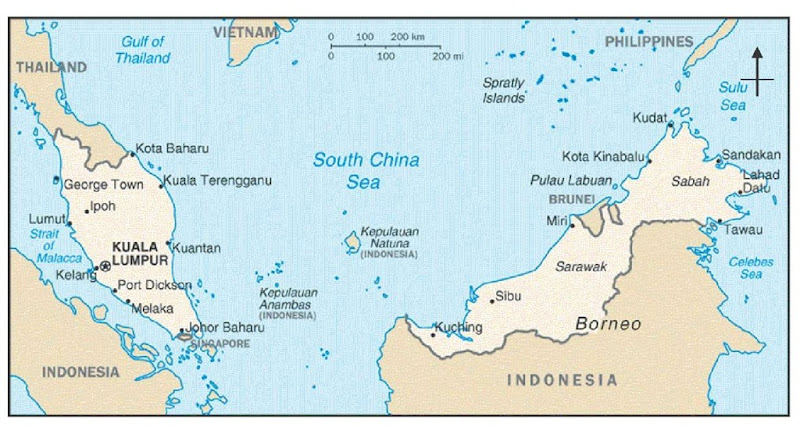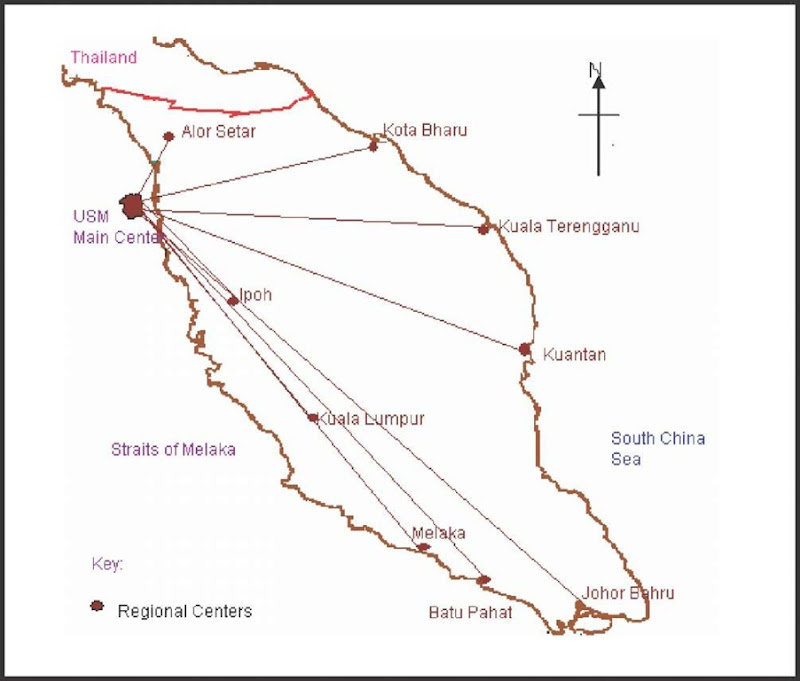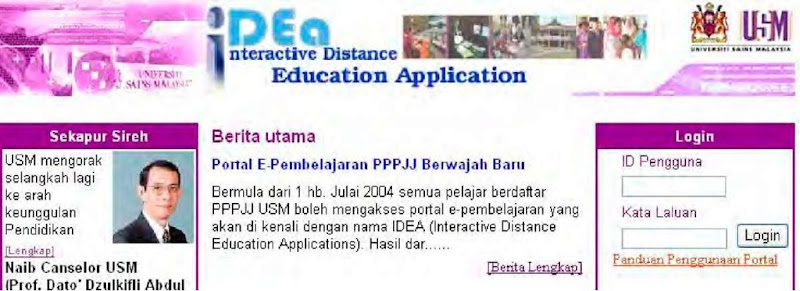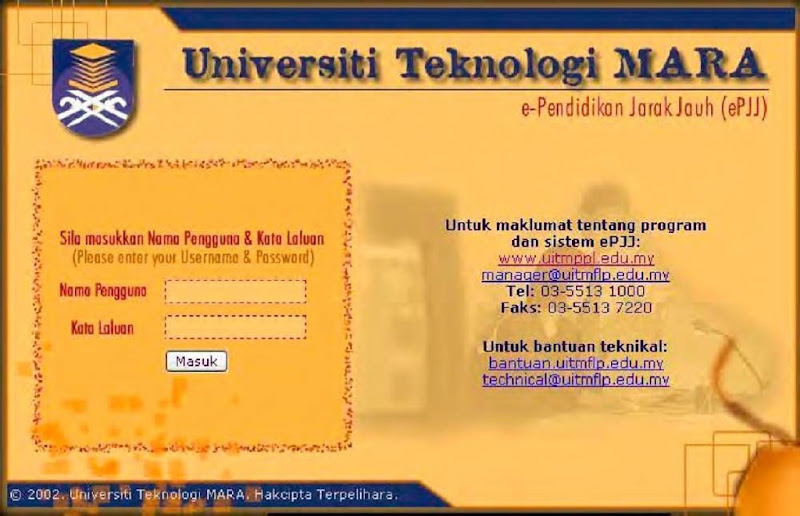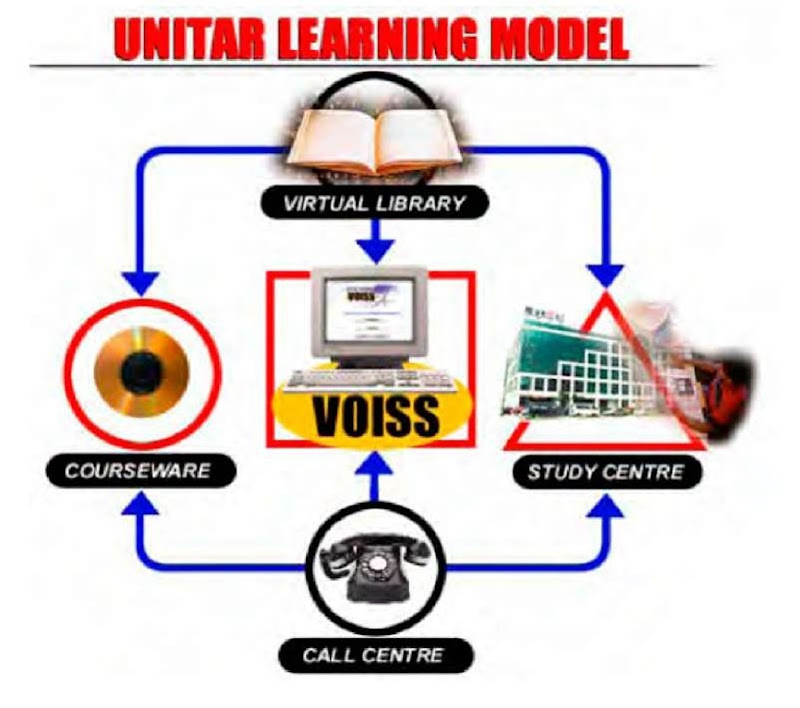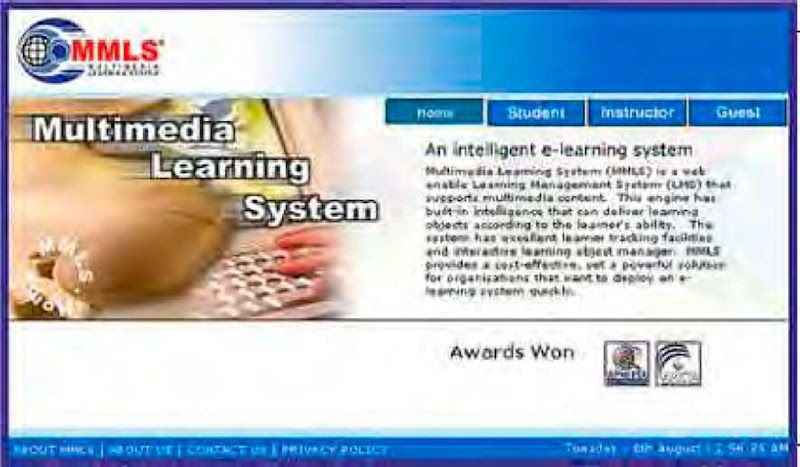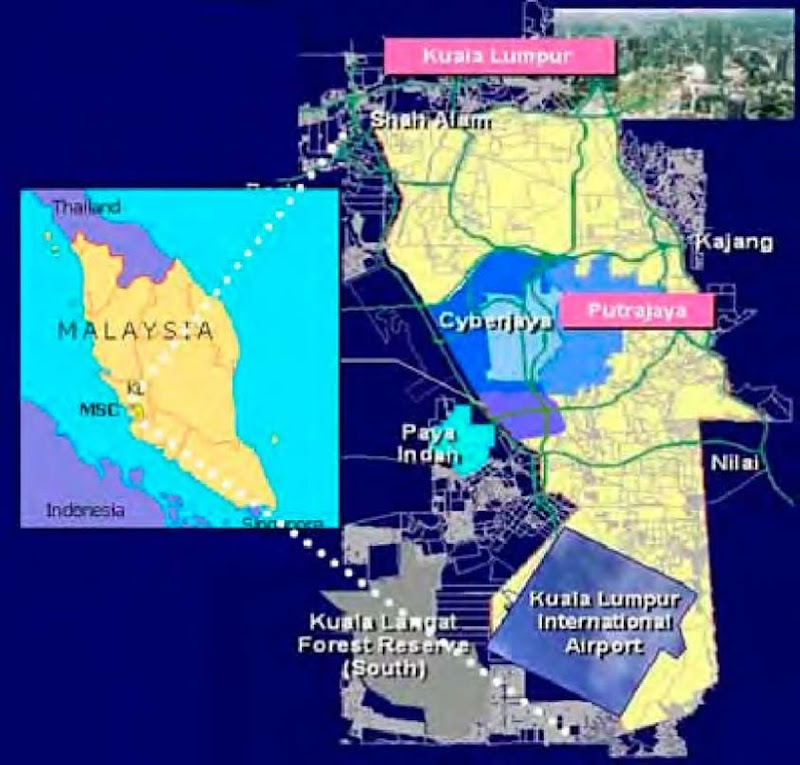introduction
Malaysia, in comparison to some of the other countries in South East Asia, is relatively small, with a size of 329,750 km2 and a population of 25.45 million (first quarter of2004). Yet, the country, which comprises the peninsular Malaysia, Sabah, and Sarawak, is undoubtedly one of the most rapidly developing countries in the region. Figure 1 shows Malaysia’s capital Kuala Lumpur and important cities.
This article discusses mainly the institutions in Malaysia offering distance education (DE) using educational technology, and it identifies the front line for the educational technology concern. In order to get a clear picture about Malaysian distance education, the reader must understand the Malaysian education system generally.
malaysian education system
Education is a priority concern of the Malaysian government, and annually, the biggest amount of the national budget is allocated for educational purposes. The objectives of the Ministry are reflected in the National Philosophy of Education, which states that education in Malaysia is an ongoing effort toward further developing the potential of individuals in a holistic and integrated manner, so as to produce individuals who are intellectually, spiritually, emotionally, and physically balanced and harmonious, based on the firm belief in and devotion to God. Such an effort is designed to produce Malaysian citizens who are knowledgeable and competent, who possess high moral standards, and who are responsible and capable of achieving a high level of personal well-being, as well as being able to contribute to the harmony and betterment ofthe family, the society, and the nation (Zakaria, 2000).
Figure 1. Malaysia
In Malaysia, primary and secondary school education is free for students between the ages of seven to 17 (a total of 11 years of universal education). The admission age to the first year of primary school is usually seven, and the graduating age for a first bachelor’s degree is about 22 years old. Over 97% of 7-year-old children are enrolled in the public school system. Malaysia has a literacy rate of 93%, which is one of the highest in he world. The government is soon to make primary education compulsory for all Malaysian children.
The Malaysian education system conducts education from preschool to higher education, as grouped below.
- preschool education from age five (for two to three years)
- primary education from age seven (for five to six years)
- lower secondary education from age 13 (for three years)
- upper secondary education from age 16 (for two years)
- postsecondary education or sixth form from age 18 (for one to one-and-a-half years) higher education
- undergraduate studies from age 20 (for three to five years)
- postgraduate studies (for one to five years)
Both publicly and privately funded educational institutions exist in the national education system. There is free primary and secondary school education in the public sector, but not in the private sector. Most primary and secondary school education for Malaysian children is provided by the government and public schools. The private sector plays a significant role in tertiary education but contributes minimum at primary and secondary levels.
The national curricula at primary and secondary levels prepare students for the common public examinations at the end of the primary, lower secondary, and upper secondary levels. Bahasa Malaysia (Malay language) is our national language and English is a compulsory subject in the schools. However, to meet the needs of the multiethnic nature of the population, the ethnic schools (known as national-type schools) are allowed to set up and use Mandarin or Tamil as the medium of instruction.
The national public examinations at the primary and secondary levels include the Ujian Penilaian Sekolah Rendah (UPSR), or the primary school assessment examination, at the end of sixth year of primary education; the Penilaian Menengah Rendah (PMR), or lower secondary assessment, at the end of the third year in the lower secondary level; and the Sijil Pelajaran Malaysia (SPM), or Malaysian Certificate of Education, for students at the end of the second year of upper secondary level or their Form five studies (usually 17 years of age). Students who perform well on the SPM will graduate to the postsecondary level, which begins with Form 6 for two more years, or they can qualify for the matriculation courses run by the matriculation department of the Ministry of Education. Form 6 comprises two years of study in postsecondary schools, at the end of which the students take the Sijil Tinggi Pelajaran Malaysia (STPM), or Malaysian Certificate of Higher Education. The STPM or matriculation certificates are necessary qualifications to enter Malaysian public universities for a first bachelor’s degree course.
Alternatively, for students who do not qualify for Form 6 or matriculation, or if they choose not to take these routes, SPM students can opt to enter private colleges or private universities for preuniversity programs, and thereafter advance into the bachelor’s degree program or other professional or semiprofes-sional courses of their choice. Malaysia’s private higher educational institutions have played a major role in providing education to students, and these have an enrollment of more than 270,900 students, including 15,000 international students.
Given the formal education process, Malaysian students are usually able to graduate with their first bachelor’s degree when they are about 22-years-old. Meanwhile, there are also many international schools or expatriate schools being established and operated in Malaysia that offer primary and secondary education to international students. The private international schools conduct their programs in the English language and offer either British or American curriculum, while the expatriate schools offer specific countries’ curriculum in their national language.
In Malaysia, there are 16 local public universities and 1 international university providing undergraduate (bachelor’s degree) and postgraduate studies (master’s degree and PhD). The general entry requirement for the undergraduate studies is the STPM or other equivalent preuniversity qualifications.
The usage of Educational Technology in malaysian Distance Education
The need to offer distance education for Malaysians arises due to limited space in local universities because of the increase in the Malaysian population, rapid development in educational technology, worldwide development of distance education, the demand for education that has increased by leaps and bounds, geographical factors, government policy to offer tertiary education for working adults, and the considerable hike in tuition fees, particularly in the United Kingdom and United States.
Government effort to launch the Multimedia Super Corridor (MSC) in August 1995 by the prime minister Dato’ Seri Dr Mahathir Mohammad opened the door of new technologies to be used in education. The MSC aims to revolutionize the way in which the world does business by offering its services to technology developers and users seeking to deliver high-value multimedia services and products to customers both across Asia and worldwide. The MSC will play a key role toward achieving Vision 2020, a master plan to enable Malaysia to attain developed-nation status by 2020. Two higher institutions arose following the MSC commitment to higher education. The University of Multimedia was built by Malaysian Telekom Ltd. while Tenaga Nasi-onal Berhad, Malaysia’s largest power utility company, established University Tenaga Nasional. Both universities are offering diploma and degree courses online. Further discussion in this paper will explain distance education, and how the Multimedia Super Corridor and the new technologies influenced the DE system in Malaysia.
Distance education has been defined in various ways. DE takes place when an instructor and learner are separated by physical distance. Technology acts as a medium or interface for face-to-face communication, bridging the instructional gap. According to Burke (1998), DE is defined as education where the learner and instructor are separated physically but connected via technology. Educational technology in DE falls into four major categories, namely (a) instructional audio tools, which include the interactive technologies of the telephone, audioconferencing, short-wave radio, and one-way audio tools such as tapes and radio; (b) instructional video tools such as still images, preproduced videotapes, real-time moving images, and one-way or two-way audioconferencing; (c) a database in which participants can send and receive information electronically; and (d) printed modules like study guides.
Malaysia’s distance learning started off with correspondence schools to cater to demands from students sitting for public examinations but who could not gain entry into government-funded schools. Institutions like Stamford College, Raffles College, Malaysia Correspondence College, Adabi College, and Federal College offered few correspondence courses. At the tertiary level, the University of London in the United Kingdom offered external degrees through the Local Examination Syndicate of Malaysia. The most well-known programs are the LLB, BSc (economics), and BA (geography and history).
Malaysia has had its own distance learning at the tertiary level since 1971. Table 1 shows the year of establishment of institutions that offer undergraduate courses through DE mode besides formal education.
Not all the universities mentioned in Table 1 use educational technology as a mode of delivering lectures in DE. The four main universities using educational technology in DE are USM, UiTM, UNITAR, and Multimedia University.
USM was the only public higher learning institution in 1971 offering courses at the tertiary level through distance learning mode. The delivery system has evolved from basic-correspondence education packages to supported distance education approaches. At the beginning, handwritten notes were sent to DE students via ordinary postal services. Furthermore, the students collected their supporting materials such as audiocassettes, slides, and pictures from the DE center. Students used this notes, slides, pictures, and cassettes to prepare themselves for their tests and examinations. Then in 1983, printout materials produced by the DE department, such as instructional modules and study guides, were the main materials, and videocassettes were supporting materials.
Table 1. The development of distance education at the higher learning institutions
|
Local Public Universities & University Colleges |
Established |
Location |
Year Offering DE |
|
Universiti Malaya (UM) |
1-1-1962 |
Kuala Lumpur |
1997 |
|
Universiti Sains Malaysia (USM) |
6-1969 |
Penang |
1971 |
|
Universiti Kebangsaan Malaysia (UKM) |
18-5-1970 |
Selangor |
1993 |
|
Universiti Teknologi Malaysia (UTM) |
14-3-1972 |
Johor |
1993 |
|
Universiti Putra Malaysia (UPM) |
4-10-1971 |
Selangor |
1995 |
|
University Tun Abdul Razak (UNITAR) |
18-12-1997 |
Selangor |
1998 |
|
Universiti Utara Malaysia (UUM) |
16-2-1984 |
Kedah |
1998 |
|
Multimedia University (MMU) |
June 1999 |
Federal Territory |
1999 |
|
Universiti Teknologi MARA (UiTM) |
26-8-1999 |
Selangor |
1990 |
|
Universiti Terbuka Malaysia (Open University of Malaysia) |
10-8-2000 |
Kuala Lumpur |
2000 |
Figure 2. Audio-graphic teleconferencing network at USM for peninsular Malaysia
Since 1988, the presence of new educational technology has played a major role supporting printed materials and mandatory intensive courses for two to four weeks at the main campus. Audio teleconferencing was introduced in 1988 and was upgraded to audio-graphic teleconferencing (TAG) in 1991. The two-way communications of audio-graphic teleconferencing, which incorporates audio systems and electronic writing boards, enabled audio and graphics to be used together live to connect the instructor and student. Nine regional centers were connected by the TAG system (Figure 2). TAG was replaced by videoconferencing to enhance the teaching and learning process through DE. Figure 2 shows the audio-graphic teleconferencing system of DE at USM.
Full-motion videoconferencing was integrated into the system in 1995. Fifteen regional centers in peninsular Malaysia are connected using microwave transmission bandwidth of 2 Mbps. Interactive video allows real-time visual contact between students and the instructor or among students at different sites. It supports the use of diverse media such as blackboards, handwritten documents, and video. Furthermore, it enables connection with experts in other geographical locations.
The virtual library was launched in 1997. USM distance learning programs transformed to a virtual library system. Students are able to access virtual library materials through the Internet. In the 1998 and 1999 academic session, USM replaced tutorials by part-time tutors at regional centers with teleconferencing. USM academic staff were provided with personal computers (PCs) connected to USMNet by 1999. Table 2 shows the evolution of USM distance learning technologies.
At present, videoconferencing facilities are the main technologies being used to deliver lectures. USM boardroom videoconferencing facilities can be connected to the Internet. The carrier used for VideoNet is a physical link fibre-optics with 728 Kbps closed-circuit lease line. The USM VideoNet link uses four main Routers 3725, each branch campus equipped with its own Tandberg multipoint control units (MCU). The leased line is operated by Telecom Malaysia Bhd. The VideoNet system is IP centric Tondberg VC system on H.323 standard which can be linked to the Internet with transmission speed of around 728 Kbps to 2 Mbps.
Beside VideoNet, USM launched its DE center’s Web portal on July 1, 2004, for their students. The portal, called Interactive Distance Education Applications (IDEA), is used by DE students to access lecture notes, communicate with lecturers, upload assignments, download notes, instructions, and course guidelines, access the academic planner, and register for and drop courses.
Table 2. Evolution of USM distance learning technologies
|
Year |
Main Materials |
Supported Materials/Systems |
|
1971 |
Lecture notes, text books |
Audio cassettes, slides, pictures |
|
1983 |
Instructional modules, *Text-book with study guides |
Audio cassettes, slides, pictures and Video Cassettes |
|
1988 |
Instructional modules, *Text-book with study guides |
Audio cassettes, Audio conferencing, radio , Video Cassettes |
|
1991 |
Instructional modules, *Text-book with study guides |
Audio cassettes, Audio graphic teleconferencing, radio Video Cassettes |
|
1995 |
Instructional modules, *Text-book with study guides |
Video conferencing, radio, Video Cassettes |
|
19972003 |
Instructional modules, *Text-book with study guides |
Video conferencing, radio, Video Cassettes, e-mail |
|
2004 |
Instructional modules, *Text-book with study guides |
Video conferencing, radio, e-mail, e-learning portal (IDEA) |
Figure 3. USM DE portal
The designed portal is divided into three main layers. The first layer can be accessed by the public without using a password. Most of the information in this layer is about the DE program and the courses offered by DE. The second layer is specially designed for students who register with the DE center. The student must log in by typing a user ID, which is the National Identification Card Number (NRIC), and password (Figure 3). This section will display a list of courses registered for by the particular student and academic information such as a videoconference schedule, examination schedule, and intensive course schedule. The third layer will display update information of the particular course registered for by the student. The DE student is able to access information such as additional notes, assignments, tools to ask questions, videoconferencing notes, course updates, and past-years’ examination papers.
Besides USM, other local higher institutions came forward to offer undergraduate courses through DE due to factors such as the corporatism (less dependent on the subsidy from the government) of all public universities by the Ministry of Education, shortages of manpower, the launch of the Multimedia Super Corridor, higher demand for DE from teachers and working adults, and the availability of sophisticated instructional technology such as the Internet and satellite.
Cognizant of the need for continuing education among the working adults of society, Institute Technology MARA (ITM) established the Centre for External Education in 1973. Classes are held after office hours on weekdays and on weekends, and courses are patterned after the full-time mainstream programs. The traditional mode of teaching with face-to-face communication is employed, while the testing and evaluation of students are carried out on the same basis. The diplomas awarded to graduates of the external program enjoy the same recognition as those offered to the full-time students and as such, no differentiation is made between students enrolled in this program and those in the mainstream. Diplomas offered are in the following fields of study: accountancy, business and management, law, public administration, mass communication, and computer science. About 3,700 students have graduated from the center’s external program since 1978 (Abdullah & Roy, 1994).
The success of the external program propelled ITM toward embarking upon the distance mode. In 1990, therefore, three programs were offered via distance education, leading to the award of diplomas in business studies, banking, and public administration. The increased interest in student percentage in the distance education program and current public policy considerations have helped to garner the credibility of the distance education program offered as a valid and justifiable mode of education vis-a-vis the conventional and contiguous mode of education. The DE trend continued until the year of 2002. The university realizes that educational technology may play a vital role in delivering both diploma and degree courses. In 2003, UiTM (previously ITM) established electronic distance education (e-DE), called Maya Faculty (Virtual Faculty). The faculty can be accessed through the Intemet from a cyber cafe, office, or home. The learner is able to print out the notes, communicate with other students, e-mail, chat, and so forth. UiTM is an example of a Malaysian higher institution that uses the Internet as a medium to deliver online courses. The UiTM’s effort to deliver DE courses online was welcomed by the academicians despite the possibility that the outcome of the implementation may take a few years.
Figure 4. Portal of UiTM’s e-DE
Figure 4 shows the Web portal for UiTM’s DE students. In short, we can say that the Internet is the main resource for UiTM to implement DE.
Since the Internet offers many powerful resources for implementing distance education, another university in Malaysia came forward to invest in e-learning. The University of Tun Abdul Razak emerged to prove that the Internet is a reliable source to deliver online courses. UNITAR is Malaysia’s first e-learning university. UNITAR started its operation in December 1997. UNITAR is wholly owned by KUB Malaysia Berhad, a bumiputra public-listed company. UNITAR has configured six main components in the e-learning academic model. They are courseware, course-management System, tutorial meetings, study center, virtual library, and customer-relationship management.
At UNITAR, traditional lectures are replaced with interactive multimedia CDs or Web-based courseware. The multimedia CDs or Web-based courseware is accessible at all times to students. It has been developed taking into consideration instructional design issues. Apart from the advantage of being repeatable, the quality of delivery is maintained at all times unlike a presentation given in the traditional classroom environment. Furthermore, each page of information can be enhanced through the use of multimedia, simulation, and games.
Figure 5 shows the Virtual Online Instructional Support System (VOISS), which is the course-management system for students and instructors. The system is Web-based and contains more than 10 different modules such as the Web-based courseware, forum, frequently asked questions (FAQ), e-mail, bulletin board, announcements, assignments, quizzes, schedule, and examination results. All modules fall under the category of asynchronous communication tools. Students gain access to the system from any Internet-ready computer anywhere, anytime.
Figure 5. UNITAR learning model
A typical student gets into VOISS to check for new announcements or updates, for example, an announcement of new assignments, forum topics, and submission deadlines. Apart from announcements, he or she can also download assignments from instructors and upload his or her assignment submission by uploading into VOISS. UNITAR is still the first e-learning university in Malaysia that offers postgraduate courses online.
Besides UNITAR, there was another university established in 1999. The so-called Multimedia University developed its own e-learning engine called the Multimedia Learning System (MMLS) in 1999. The university has wireless Internet access that allows the students to access the learning materials anywhere on the campus. Even the hostels are equipped with
Internet access points. Subsequently, students get easy access to online lecture notes at anytime at their own convenience.
MMLS is an innovative multimedia-based instructional mode, where content is delivered digitally using text, graphics, animation, sound, and video. MMLS was designed with the underlying concept of a “virtual teacher within a virtual classroom environment,” having the ability to “teach” the students rather than just simply delivering the learning materials to a learner. The system has extensive tracking and monitoring features (Asirvatham, 2004).
At MMU, the subject-matter expert (SME) is required to attend a course on instructional design, HTML (hypertext markup language), and animation. This is to ensure that the SME has some knowledge in these areas before developing the storyboard. Once the storyboard is confirmed with the guidelines set, the digital content development will be done together with the multimedia designers. Currently, about 80% of the lectures are delivered face to face, while the remaining will be via e-learning. The degree of usage of the e-learning system will vary according to the SME (Asirvatham, 2004).
Figure 6. MMLS interface
Based on the learner’s competence, the MMLS system (Figure 6) is able to select appropriate learning objects for the learner. Learners who have high competency may be presented with learning objects that are more challenging. The system is like a virtual teacher that plans the lesson according to the individual requirement of the learner. Thus, the system is a truly learner centered and self-paced.
The MMLS system has many supporting tools, such as a staff and student registration system, a learning-object manager, a question bank, an intelligent navigation system, short notes, e-mail, online chat, a whiteboard, newsgroup, a bulletin board, and a report card.
MMLS signifies the creation of an intelligent, interactive, self-paced and instructor-led Web-based teaching and learning tool. The current version (3) of the MMLS platform is independent and easy to install. Some of the features of MMLS are extensive student monitoring and tracking, an intelligent delivery system, course management by the instructor, an auto-HTML page sequencer, a questions bank, online self-tests (with automarking features), short notes (with save, view, and print features), e-mail, chat, references, an e-library, an online forum for asynchronous interactions, and reports on students’ activities and progress, presented in table and chart format.
There are four components in MMLS, as shown in Figure 7. Information is stored in the database and the MMLS engine generates the content once a student (client) has access to the Web. At the same time, the time that a student spends on a learning object is tracked to determine the level of understanding.
The four higher institutions discussed above mostly use technologies such as audio, video, Internet (e-mail, chat, forum), and videoconferencing. The advent of the Internet in the early 2000s, however, did not attract e-learning instantaneously. There are two reasons that may be suggested for such lack of enthusiasm in e-learning. First, the Internet was still not very stable and its lack of penetration would not attract the critical mass required. Second, face-to-face teaching and learning is still very much preferred due to lack of confidence in independent study. Although the second reason contradicts the off-campus and external degree programs that have been successfully conducted all this time, it still remains to be true even after e-learning was introduced in the last three years. Currently, the sway can be seen as information technology is more emphasized in the public and private sectors. The further discussion will analyse the changes in government policy that change the usage of educational technology in DE.
Figure 7. Multimedia learning system architecture at Multimedia University
Government Policy Relating to Educational Technology in Distance Education
Malaysia spearheaded its information technology infrastructure by introducing the Multimedia Super Corridor in August 1995, involving several areas such as the Kuala Lumpur City Centre (KLCC), the new Kuala Lumpur International Airport, and Putrajaya (Figure 8).
Malaysia launched its own satellite, Measat-1 (East Asia Satellite), on January 13, 1996. Measat-1 represented a category of a new generation of satellites for direct service by television users in homes as well as institutions. This is a cutting-edge technology for the tropical South EastAsian climate as it can provide clear reception despite heavy rainfall. Users only need a small 500-cm antenna and a receiver. In short, the transmitter allows for voice, data, and video transmission that is suitable for interactive distance learning.
The Measat-1 footprint covers Malaysia, India, Myanmar, Brunei, Indonesia, Singapore, Laos, Cambodia, Vietnam, the Philippines, Hong Kong, Taiwan, and Southern China.
The government realized that the MSC concept needed a catalyst to accelerate multimedia research and development. It has therefore committed to the development of the seven flagship applications which it hopes will stimulate industry activity: electronic government, multipurpose smart cards, smart schools, telemedicine, research and development (R&D) clusters, a worldwide manufacturing web, and borderless marketing centers. These flagships are explained briefly as follows.
• Electronic government: Five pilot applications have been identified to lead the development toward electronic government: a one-stop application for vehicle registration, licensing of drivers, paying of summons and utility bills, and retrieving of information from the Ministry of Health; a generic office environment, which calls for an integrated and open paperless office environment for the prime minister; a way for civil servants to be able to access accurate information to do their tasks efficiently; electronic procurement, which calls for a single system that can be used for all government purchases; and human resource management, in which the government wants a single interface to administer all human resource management tasks and to have a project-monitoring system. Government school teachers who plan to pursue further education are able to get a permission letter immediately. For Example, most of the Malaysian primary school teachers may upgrade their current status if they hold a first degree. They must get an approval from the Ministry of Education before joining any degree courses. Electronic government opens the door for them to get the approval letter immediately. Multipurpose smart cards: These are national multipurpose cards (MPCs) that will be issued to all Malaysian citizens. Two cards are being planned: a government MPC, which will serve as national identification, a driving license, and an immigration and health card, and the second is a payment MPC, which will handle electronic cash, debit,ATMs (automatic teller machines), and credit cards. The institutions offering DE will be able to verify the potential student’s nationality, health report, financial status, and crime report before offering a place for them. This will avoid any misconduct on the application forms. Smart schools: A network of schools and other educational facilities using multimedia technology with worldwide linkages is being conceived.
Figure 8. Plan of multimedia super corridor
The importance of distance learning technology will be promoted to facilitate the provision of educational services to less developed areas, as well as off-campus courses to serve remote students both nationally and regionally. The five pilot applications being planned as part of the smart school application are an assessment system, a management system, a technology infrastructure, systems integration, and teaching-learning materials.
Telemedicine: This initiative aims to keep people healthy by providing them with access to information and remote consultation with the intention of dramatically changing the way health-care services are traditionally delivered and assessed. The role of telemedicine is to empower the individual to manage his or her own health, and to integrate the flow of information in order to allow a smooth delivery of services and products throughout the health-care system. A multimedia network is envisaged that will provide high-quality medical services, products, education, and healthcare management to patients, health workers, and institutions throughout Malaysia and the region. Malaysia aims to become a regional center of excellence in telemedicine development with key links to international research ventures. Research and development clusters: The aim of this application is to ensure that the MSC establishes itself as an attractive location for innovative companies developing next-generation multimedia technologies. There are three core elements to guide this achievement. First, a corporate R&D cluster will be established and fostered through R&D funding (multimedia grant scheme), financial incentives, and dedicated facilities. Second, a multimedia university will be created to provide links between corporate and academic R&D activities, as well as build a strong base of local knowledge workers. Finally, large-scale R&D pilot projects will be strongly encouraged and developed to provide companies with opportunities for collaboration in significant topics.
Worldwide manufacturing Web: The aim of this initiative is to provide an environment conducive to high-value-added manufacturing activities and related service operations. This application will provide companies with the opportunity to locate manufacturing and manufacturing service hubs within the MSC, and encourage them to use multimedia facilities to build links between their national and regional operational centers around a wide range of support services including R&D, design, engineering support, manufacturing control, procurement, and distribution and logistics support.
Borderless marketing centers: The aim of this application is to develop a “world’s best” environment in the MSC for companies using multimedia technology to create and deliver marketing messages, customer services, and information products to their multicultural and multinational customers across borders. Borderless marketing will facilitate their existing business and help generate new business opportunities, and is designed to spearhead the growth of multimedia-based service industries in the MSC. The emphasis of the borderless marketing initiative will initially be on telemarketing, online information services, electronic commerce, and digital broadcasting. It is Malaysia’s intention to become a distributive hub for products and materials, as well as a communications hub for data networking and local value addition. Institutions with DE faculty may offer their courses all around the world.
Most of the flagships faced setbacks due to economic downturn since 1997. However, the Malaysian government is able to recover from the economic crisis through cautious planning and firm action by implementing a fixed exchange rate of Malaysian currency (ringgit). At present, all the flagships are under development and will soon be implemented by the year of 2005. The launch of MSC greatly affects the Malaysian higher education system. Well-established institutions flex their muscles to offer a variety of modes of learning online.
conclusion
Distance education in Malaysia, which is mainly offered by the University of Science Malaysia, UNITAR, Multimedia University, and University Technology Mara, has yet to move onto the next stage of the application of telecommunication technologies and services, namely two-way videoconferencing available in analogue and digital transmissions. The next phase of the application of technologies and services is computer-mediated communication, also known as computer conferencing, which allows students to access instructional materials at both scheduled and unscheduled times and at anyplace. The peripherals involved are a personal computer, a modem, and a telephone line. The mentioned technologies are in place in Malaysia’s telecommunication system either via fibre optic or the digital microwave network furnished by Telekom Malaysia and the satellite technology of Measat-1 and 2.
As a developing country, Malaysia has gone full swing into the telecommunication technology for distance learning. First-generation distance learning was mainly paper and print based, followed by audiocassettes as the second generation. Then came audio-graphic conferencing as the fourth-generation distance learning technology. The fifth, sixth, and seventh generations are one-way video, two-way video, and computer conferencing, respectively. At present, the Internet is the most popular medium to deliver DE in Malaysia.
Even though there are many proceedings ongoing, the new technologies in Malaysia are still very new and not widely used. Malaysia is still on the way toward improving its educational technology infrastructure.
key terms
Audiographic Teleconferencing: Voice communication supplemeted with the transmission of still images.
Distance Education (DE): DE takes place when a content provider and a learner separated by physical distance.
Internet: The worldwide network of all computers using “transfer control protocol/Internet protocol” (TCP/IP), generally considered the combination of all computer-based communications activity (e.g., e-mail, World Wide Web).
Measat-1: First EastAsia Satellite. New generation satellite for direct users’ service by television users in homes as well as institutions.
Multimedia Learning System: where content is delivered digitally using text, graphics, animation, sound and video.
Multimedia Super Corridor: Malaysia Govenment’s Information Technology Infrastructure plan.
Videoconferencing: Electronic techniques that are used to allow three or more people at two or more or more locations to communicate.
Virtual Online Instructional Support System (VOISS): which is the course management system for students and instructors.
